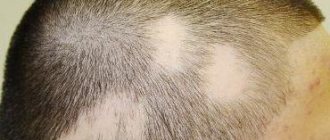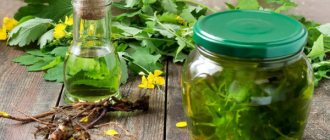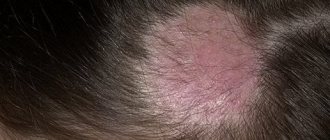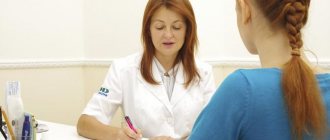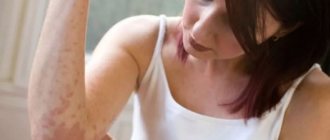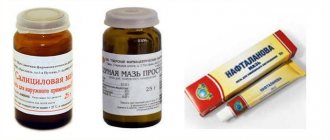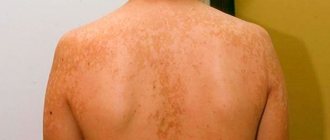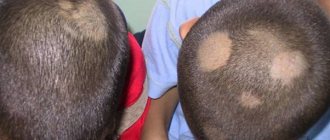The most common dermatological diseases include lichen - an infectious lesion of skin areas caused by the action of microscopic fungi or viruses. The danger of lichen is that it is easily transmitted by contact from person to person or from sick animal to person and has several varieties that require a special approach to treatment.
What kind of lichen occurs, what type of therapy is more effective in each specific case, how to avoid complications - this will be discussed further.
Pathogens and carriers of lichen
The content of the article
Dermatologists distinguish several types of lichen, caused by different pathogens.
Most often, the appearance of lichen on human skin is initiated by fungi:
- zooanthropophilic - transmitted to humans from an infected animal, including from pets;
- anthropophilic - live only on human skin;
- geophilic - live in the soil and come into contact with human skin upon contact with the ground.
In addition to fungi, viruses are often the causative agent of lichen. Their cunning lies in the fact that they can live asymptomatically in the human body for a number of years and become more active when the immune system is weakened. This is exactly how, for example, those familiar to many with herpes or shingles behave.
Prevention and hygiene measures during illness
The neck is one of the most unprotected areas of the body.
To prevent infection, as well as during treatment, you must follow a number of rules:
- Skin protection. Do not use harsh perfumes. Clothes should not have tight seams to avoid chafing the skin. If the skin of the neck is clean, without wounds or microcracks, it will be more difficult for the pathogen to latch on to it.
- Shingles on the neck is viral in nature, so if you come into contact with chickenpox carriers, you should take a course of interferons and immune drugs, after consulting a doctor.
- It is necessary to regularly inspect the surface of the skin. The development of ringworm on the neck is easy to notice if you are careful enough. The earlier the disease is detected, the easier it is to get rid of it.
- It is not advisable to wash yourself if you have lichen, but you must maintain cleanliness. Therefore, the bath should be replaced with a shower, which should be taken for up to 10 minutes. After washing, do not rub your neck with a towel, but pat it lightly, preferably with paper napkins, which you then throw away.
The best prevention is a healthy lifestyle. This includes quality nutrition, moderate but regular exercise, adequate sleep and rest.
Types of lichen
In order to cure lichen, it is not enough to make a general diagnosis. It is equally important to promptly determine the type of lichen, since each is characterized by its own symptoms and requires its own treatment.
Dermatologists distinguish the following types of lichen:
- shearer;
- encircling;
- pityriasis;
- pink;
- red flat;
- tubular;
- solar;
- scaly.
Only a competent dermatologist can draw a line between them and correctly prescribe a set of therapeutic measures. Therefore, under no circumstances should you self-medicate. The surest way is to go to the clinic at the first sign of deprivation.
Now about what changes in the skin should alert a person.
Causes
A person may develop lichen for the following reasons:
- Weak immunity, unable to cope with viral infection;
- Heredity;
- Transference of acute respiratory diseases, which, if complicated, can cause certain types of lichen;
- Contact with animals that are carriers of infection;
- A side effect of taking certain medications that cause disease, most often these include products for external use;
- Exacerbation of an allergic reaction;
- Frequent stressful situations;
- Damage to the skin that was not promptly treated with an antiseptic drug.
There are a large number of causes of the disease, most often depending on the type of lichen.
Ringworm
The source of trichophytosis - this is the second name for ringworm - can be any of the fungi that primarily affects the hairy parts of the body (head and beard), neck, shoulders, face. The symptoms of this type of lichen are usually as follows: first, swollen pink or red spots with clearly defined edges appear, then the edges of the spots become covered with bursting blisters and an itchy crust, and finally, the center of the spot begins to peel off, and the hair in the affected area breaks off and thins.
Ringworm is diagnosed using a Wood's lamp. If the disease is confirmed, the patient - children often suffer from ringworm - is protected from contact with others and is prescribed complex therapy, including taking special tablets (for example, Terbinafine) and the use of antifungal ointments. In particularly difficult cases, it is possible to take hormone-containing agents that help stop the inflammatory process on the skin.
How and with what to treat lichen in the neck area
During treatment of lichen, it is important to understand that spots are only local manifestations of the disease. It is necessary to comprehensively influence the cause of the disease.
Shearer
One of the most common fungal types of lichen. Most often, infection with this form occurs from cats or dogs. To become infected, contact with the animal's fur or the area it has touched is sufficient.
The causative agent of the disease is a fungus. The way lichen on the neck looks explains its name.
Ringworm is a disease, the appearance of which in many cases is associated with poor hygiene. It is important to contact a specialist at the first suspicion of infection; he will prescribe adequate treatment. The prognosis of the disease in most cases is favorable if you follow all recommendations and complete all appointments.
Immediately pink spots appear on the neck, which after a while begin to peel off. All small hairs at the site of infection fall out. If treatment is not started, the lesion will spread, eventually moving to the head and chest. On the scalp, lichen is clearly visible, as it causes hair loss. This lichen does not cause severe itching or ulcers on the neck, so often the carrier of the disease does not notice it until serious hair loss occurs.
To treat this form of the disease the following is prescribed:
- antihistamines (Suprastin, Advantan, Zyrtec) to relieve swelling and itching;
- antifungal ointments Lamisil, Sinaflan, Mycoseptin, Exoderil, which are applied to the infected area of skin and 2 cm around it;
- corticosteroids Sinalar, Flucinar are needed if the affected area is very large and the patient experiences severe discomfort;
- in case of severe infection, a complex antibiotic with antifungal action, Griseofulvin, is required, which is taken in tablet form.
Pityriasis
This is a fungal disease that affects the stratum corneum of the skin. It manifests itself in the form of changes in skin pigmentation, but there are no inflammatory manifestations. Spots appear on the neck with flaking in the form of flour, so it is often called pityriasis, or multi-colored - due to the fact that the spots have different shades (from brown to light yellow). The spots that appear do not tan in the sun.
Just because the stains are gone doesn't mean they won't come back. The disease is chronic and cannot be cured forever. Therefore, prevention is mandatory!
Pityriasis versicolor is caused by fungi that normally live on the skin of most people. They are activated under certain conditions, for example, excessive sweating. Therefore, for treatment, the cause must first be eliminated. Then antifungal drugs (Miconazole, Terbinafine, Clotrimazole) are prescribed in the form of ointments. Sulfur and Salicylic ointments, which have exfoliating, anti-inflammatory and antifungal effects, show a good effect.
girdling
Shingles in the neck area is one of the most dangerous diseases. Its causative agent is the herpes virus, so getting rid of the manifestations is much more difficult, and it is impossible to completely eliminate the pathogen. Viral shingles, or herpes zoster, is easily transmitted through respiratory droplets, but this is the first time the virus has caused chickenpox. Shingles is a recurrence of chickenpox that does not happen to everyone. Only with a strong decrease in immunity does the virus become more active, which leads to the appearance of herpes zoster.
This type of lichen is very contagious and transmission of the virus can occur if you share towels, dishes, and clothing.
Symptoms of the disease:
- general malaise,
- temperature increase,
- blistering rashes along major nerves.
After a few days, the rash intensifies, the blisters burst and a strong painful sensation appears - burning and itching. Numbness of the affected areas appears, and the lymph nodes in the neck area become enlarged.
Treatment is mainly symptomatic. Means used:
- to relieve fever (tablets containing ibuprofen and paracetamol);
- antihistamines against itching (Zyrtec, Loratadine);
- analgesic ointments (Mataren plus, Lidocaine), since nerve damage often causes severe pain.
Local agents based on acyclovir (Acyclovir, Herpevir) are used against the virus itself, which do not allow the pathogen to multiply and invade new territories on the neck. Stimulation of the immune system is also required, because only a person’s own immunity can suppress the virus. Interferon and Cycloferon are prescribed.
Pink
A disease of viral-allergic nature. The origin is not precisely established, but it is assumed that it is caused by herpes virus types 6 or 7. Most often it appears after a cold, in autumn or winter. When manifested, several foci of infection may form in the body, which disappear on their own after a few weeks (8-9).
The first signs of pityriasis rosea in humans are manifested by the formation of a huge number of pinkish, small, round or oval-shaped focal lesions.
Pityriasis rosea appears as pink spots of varying sizes and densities. After a few days, the affected skin begins to peel off and itching appears.
How to treat lichen that has an unknown origin? No special treatment is required. The main thing is not to comb or rub with a washcloth. It is recommended to avoid the use of cosmetics during the course of the lichen. Clothing should not touch the affected area of the neck.
If the symptoms are very disturbing, you can take antihistamine tablets (Tavegil, Zyrtec) or apply Lorinden or Triacutan ointment. These ointments contain hormonal components, so before use you should consult your doctor and follow his recommendations.
Red flat
The nature of this disease has not been established. Red spots with clearly defined edges appear on the neck. They can be found in other parts of the body, affecting mucous membranes and nails. The affected area of the neck experiences itching and flaking, discomfort when turning or tilting the head.
Rashes with lichen planus are often multiple and located in groups, forming garlands, rings or lines on the skin
Treatment is rarely very effective because doctors do not know the cause. Prescribed:
- antihistamines with a calming effect (Diphenhydramine, Clemastine);
- mild hormonal ointments (Prednisolone);
- PUVA and phototherapy (ultraviolet irradiation).
To relieve symptoms, you can use traditional recipes:
- Birch tar or tar soap as lotions. Apply for 20-30 minutes twice a day, then rinse with cool water.
- Calendula tincture is diluted with water (2 tablespoons per glass of water). The fabric is soaked in the solution and applied to the neck. Half an hour is enough.
Other types
There are other types of lichen in the neck area. These are eczema and psoriasis. They, unlike many others, are not contagious, since the source of the disease is inside the body. Rashes in these diseases are only a symptom. The reasons are an inadequate immune response and genetic predisposition.
Psoriasis affects more than just the neck. The affected area may extend from the base of the hair to the upper surface of the chest. Psoriasis (scaly lichen) looks like raised areas of skin covered with small scales. If you pick off a scale, droplets of blood will appear underneath it.
Eczema rashes are red and often wet in appearance and feel. That's why eczema is also called lichen rash. The rash is very itchy and spreads to other areas of the skin.
Treatment for both types of lichen is complex and includes:
- a strict diet with the exclusion of allergens;
- oral antiallergic medications (Fenkarol, Suprastin) and hormonal medications for lubricating rashes (Diprosalik, Elokom-S);
- regular sanatorium treatment;
- physiotherapy;
- sedatives (Valerian, Novo-Passit).
A complete cure for eczema or psoriasis has not yet been achieved.
Herpes zoster
It is caused by a virus that remains “dormant” in the human body for the time being. It appears in the form of fluid-filled blisters, usually located in the intercostal part of the body. Associated symptoms of herpes zoster: pain (caused by damage to the intercostal nerve endings) and itching of the skin in the affected area; sometimes fever with chills, headaches.
Treatment of herpes zoster is complex. Since the blisters of shingles burst, they are initially treated with brilliant green. And to lubricate the crust that forms in their place, use dermatol ointment. In parallel, the doctor may prescribe antipyretic, painkillers and antiviral drugs, quartz and laser therapy.
Pityriasis versicolor
It is also called multi-colored, because the small pink - and sometimes greenish - rash that appears on the back, stomach, shoulders, and chest changes color and turns brown as the disease develops. Moreover, on tanned skin (in summer) these spots appear discolored, but on white skin (in winter), on the contrary, they look quite dark.
Diagnosis of pityriasis versicolor can be carried out by a specialist who has resorted to microscopic examination of the dermis, Balzer iodine test, and Wood's lamp. He will also prescribe a special drug treatment (with the help of Orungal, Mycozolon, etc.) that can kill the fungus that causes the disease.
With proper therapy, pityriasis versicolor can be eliminated quite quickly (although without treatment, the disease drags on for many years). Additionally, the patient is recommended to adjust their lifestyle (a concomitant cause of this type of lichen may be increased humidity or air temperature), and carry out a complete treatment of clothing and linen.
Traditional methods
As they say, “In wrestling, all means are good!”, so there is an opportunity to use proven grandmother’s methods.
Folk remedies and recipes for the treatment of lichen have always saved people when modern medicines were unavailable.
- Propolis infusion. 200 grams of the product must be poured into ¼ glass of water and left for a week.
- Film from a raw egg. You need to crack the egg and remove the raw film from it, which contains useful vitamins for future chickens. This mucus should be lubricated on the affected parts.
- Cranberry juice. It is necessary to lubricate the stains with freshly squeezed juice.
To avoid complications, you should contact a specialist in time for professional help. Ringworm can develop into complex forms of the disease and cause irreparable problems to a person.
Lichen rosea (or Zhibera)
A little-studied type of disease that usually develops against the background of a weakened immune system in the autumn or spring season. The risk group in this case consists of girls who have a hormonal imbalance in their body.
The manifestation of lichen is the appearance of round or oval pink and light brown spots on the chest, shoulders, back, sides, and skin folds. Dermatological changes, accompanied by itching and flaking of the skin, may go away on their own within a few weeks, however, when the first signs of the disease appear, it is recommended to consult a doctor to rule out the presence of syphilis similar in symptoms.
Pityriasis rosea
An allergic disease that often develops in people with poor immunity. This type of lichen is not contagious. Appears most often after an infectious disease. The disease goes away on its own after four weeks; if you take medications, this period can be extended.
Lichen ruber planus
Flat multi-colored (from pale pink to purple) nodules of lichen red often appear on the mucous membranes, nails (they crumble), and delicate skin of the chest and abdomen. Their appearance is accompanied by severe itching, which, as a result of scratching, leads to the rapid growth of foci of skin damage.
Dermatologists find it difficult to determine the cause of the appearance of lichen red, but note that it is quite common in patients with diabetes, as well as those suffering from diseases of the stomach, liver, and biliary tract. Moreover, women over 40 years of age are primarily at risk.
How is lichen transmitted from person to person?
Many types of lichen are contagious and can be transmitted through contact with an infected person.
Infection most often occurs when particles of damaged skin enter healthy areas, due to which the virus begins to gradually progress and infect the epidermis.
Ringworm
Ringworm is caused by trichophytosis infection and tends to quickly spread to healthy areas of the skin. Most often it is transmitted through contact with animals, but as a result of human infection, transmission of the infection through contact is possible.
Most often, this type of disease manifests itself with the following symptoms:
- The appearance of plaques with the presence of bubbles, with unclear edges;
- When the hair part is damaged, the hair becomes damaged, which leads to bald patches;
- When scratching the formations, the disease moves to healthy areas of the skin;
Has the ability to be transmitted to other people using the following methods:
- During physical contact with a person, such as shaking hands;
- When using personal care items such as towels and combs;
- When using things of an infected person, such as hats;
- Upon contact with an animal with the presence of the lichen virus;
- During contact with pieces of furniture with which the animal was in contact;
- In public places, if there is damage to the skin.
Ringworm can also be contracted in baths and saunas, so after visiting such places it is necessary to treat the skin with an antibacterial agent. During the presence of skin lesions, it is necessary to avoid visiting public places with high humidity.
Pityriasis rosea
Pityriasis rosea or Zhibert's pityriasis is a disease that very often appears without any symptoms. Medical specialists cannot say with certainty the causes of the disease.
Most often, ringworm appears as pink and brown patches that first appear in places such as the inner thighs and chest. Most often, the disease does not cause unpleasant symptoms and tends to disappear on its own.
This type of skin disease does not require special external treatment and is not contagious to another person.
Most often, the following reasons contribute to the appearance of lichen:
- Reduced immunity;
- Failure to maintain the required level of hand hygiene;
- Untimely treatment of internal organs;
- Heredity.
Many people who have a high level of excitability and experience frequent stressful situations are most likely to develop this type of disease.
Tinea tubularis
Malasezzia is the name of the fungus that causes tubular lichen. This fungus can live in the human sebaceous glands for a long time without revealing itself in any way. Under certain conditions: for example, a decrease in immunity or an imbalance in the acid balance of the skin, severe hypothermia or excessive sweating, endocrine disorders or the development of certain chronic diseases - it begins to multiply intensively.
As a result, small flaky spots appear on the skin, which gradually grow and merge into one large spot. And although the victim practically does not feel itching or pain, he should not postpone a visit to the doctor.
After diagnosing the disease (methods used - scraping test, iodine test, use of a Wood's lamp, etc.), the dermatologist prescribes local or complex antifungal drugs.
Prevention of occurrence
In order to reduce the risk of contracting this type of skin disease such as lichen, you must first adhere to the following rules of prevention:
- Properly carry out all necessary hygiene measures;
- Use only personal hygiene items;
- After visiting public places, it is necessary to use antibacterial drugs;
- Avoid contact with people who are carriers of this type of skin disease;
- Avoid contact with stray animals;
- Keep your pet clean;
- Lead a healthy lifestyle;
- Avoid hypothermia.
A prerequisite for preventing the occurrence of lichen is the consumption of food to strengthen the immune system; if necessary, you can use special vitamin complexes.
Ringworm solar
Under the influence of sunlight, excessive sweating, abuse of solariums and antibacterial agents, uneven, flaky dark spots may appear on the skin. Their occurrence is provoked by a fungus that multiplies on the dermis as a result of a violation of its acidity. Gradually, the spots grow to significant sizes, which causes aesthetic discomfort to a person: they clearly stand out against the tan. And although solar lichen is rarely accompanied by itching and pain, it requires mandatory therapy.
As a rule, solar lichen is diagnosed quickly: it is often enough to conduct an iodine test or use a Wood's lamp. At the initial stage of the disease, local antimicrobial drugs help well; in cases where the disease is advanced, the doctor prescribes complex therapy.
Pityriasis
Pityriasis versicolor is a fungal disease. Fungi multiply on the lower parts of the legs. This type of lichen is characterized by clear boundaries and a brown color of the affected area.
Treatment must be carried out in a timely manner to prevent the spread of the fungus throughout the body. Treatment methods for such lichen on the legs come down to the use of antifungal agents. Duration of therapy is up to four weeks.
Ringworm scaly
The causes and treatment of this lichen, better known as psoriasis, are not fully understood. However, it is noted that it appears more often in people suffering from diseases of the endocrine and nervous systems and prone to alcoholism.
Psoriasis is a chronic disease, often occurring latently, i.e. is hidden. First, small reddish spots appear on the skin - most often the bends of the legs and arms, lower back and buttocks, causing severe itching due to dryness. Gradually, the spots grow and turn into a lesion that affects a large area of the skin. The peculiarity of psoriasis is that when the plaque is removed, the lichen begins to bleed.
It is necessary to treat scaly lichen under the supervision of a doctor, who will select the necessary topical medications (when applying them, you must strictly follow the instructions), and, if necessary, prescribe antibiotics.
General symptoms
Lichen is a whole group of diseases. These include fungal pityriasis and ringworm, viral zoster, eczema and psoriasis, as well as Vidal's and Gibert's lichens of uncertain origin. But some common symptoms can be identified:
- rashes in the form of spots of various shapes and sizes;
- skin pigmentation disorder;
- itching and burning;
- ulcers that form due to untimely or improper treatment.
Lichen may not always develop after contact with a source of infection. There are a number of factors contributing to this:
- improper skin care;
- open wounds on the neck: scratches, ulcers;
- allergic reactions;
- unbalanced diet;
- hypothermia, overheating, excessive sweating;
- chronic stress.
If treatment is delayed, rashes turn into ulcers, open wounds and cracks in the skin, which is dangerous for harmful microbes. Then you will need to be treated with antibiotics.
Are all types of lichen contagious?
Many people believe that absolutely all types of lichen are dangerous to others. Meanwhile, this is not entirely true. So, with pink, ringworm or shingles, the patient will really need to be isolated. But, for example, pityriasis or scaly ones are not dangerous for others.
And this is another reason why any change in the skin should be the reason for going to a specialist - only he will be able to correctly determine the type of lichen, assess the degree of its danger, give recommendations for treatment, and finally select a set of medications and therapeutic measures aimed at including general strengthening of the body.
How to treat ringworm in children?
Treatment of ringworm in a child is the responsibility of a pediatric dermatologist, since the characteristics of the child’s body require special doses and composition of medications.
Hygiene and child care are also important elements of pathology therapy:
- boiling and ironing clothes in contact with affected areas of the skin;
- treating household surfaces with disinfectants to prevent the spread of spores;
- frequent change of bed linen;
- washing in the shower rather than the bath, etc.

